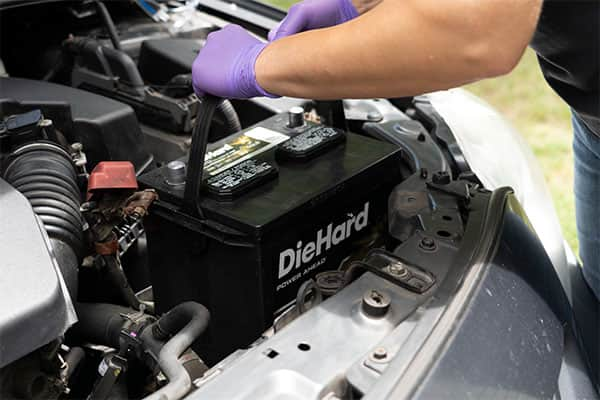Back in the 60s and 70s, spark plugs were part of a regular tuneup and needed to be changed every 20-30,000 miles. Now plugs can last as long as 75-120,000 miles before needing a change, but there's still some confusion about spark plug types and heat ranges. Let's clear up some of that confusion.

Spark Plug Heat Ranges: What Do They Mean?
A spark plug's heat range indicates how much heat the plug is able to remove from the combustion chamber. That seems a little counterintuitive, as you may think that it would refer to the amount of heat generated by the plug on ignition, but no.
Spark plugs run at a temperature of 500 to 850 degrees at the tip. The heat that's generated is dissipated from the firing tip to the insulator, then the spark plug shell, and then to the cylinder head. Once heat is transferred to the cylinder head, it's then dispersed through the coolant water jackets. The heat range is a function of the direction the spark or current has to take as it makes its way from the plug wire or coil-on-plug to the electrode.
A shorter insulator tip means a shorter path for the spark and a colder-running plug, while a longer tip means a longer pathway and a hotter plug. In other words, the cooler plug transfers heat away to the cylinder head faster, while a hotter plug's heat transfer is slower. Things like the method of bonding the insulator to the shell and the insulator material's thermal characteristics have an effect on heat range as well.
In general terms, a hotter plug is more desirable for short runs and stop-and-go traffic, while a colder plug is better for hauling heavy loads at highway speeds. Spark plug heat range is a key part of the formula that engineers take into account during the design process.
Heat Range Codes Vary by Manufacturer
Different manufacturers have different codes that you can reference to find out how a plug is rated for heat range. This, for instance, is Autolite's system for coding a plug by heat range.
This can be confusing if you want to use a plug from a different manufacturer, though. Our cross-reference chart below is a helpful starting point, and we also encourage you to contact the manufacturer directly with application questions for your vehicle.
| NGK | Bosch | Denso | Champion | |
| HOTTER | 2 | 10 | 9 | 18, 19 |
| 4 | 9 | 14 | 14, 16 | |
| 5 | 8 | 16 | 11, 12 | |
| 6 | 6, 7 | 20 | 9, 10 | |
| 7 | 5 | 22 | 7, 8 | |
| 8 | 4 | 24 | 6, 61, 63 | |
| 9 | 3 | 27 | 4, 59 | |
| 9.5 | 29 | 57 | ||
| 10 | 2 | 31 | 55 | |
| 10.5 | 32 | 53 | ||
| 11 | 34 | |||
| 11.5 | 35 | |||
| COLDER | 12 | 37 |
When Is It A Good Idea To Go With A Different Heat Range From OEM?
- Racing modified engines: A change in spark plug heat range doesn't increase or decrease horsepower, so let's just get that right out of the way. A serious engine modification, though, like higher-compression pistons, ported-and-relieved chambers or oversize valves, will mean a change in spark plug performance. Unfortunately, there's not a handy rule of thumb for making recommendations on this kind of thing. You'd probably be wise to check the specs recommended by the component manufacturer or your tuner to make that call.
- Finding the right heat range: Here's a real simple rule. Start off with a colder plug. A colder plug won't hurt the engine, although it might eventually foul and misfire due to poor combustion efficiency and a lack of heat to clean the tip and electrode of carbon deposits. A hotter plug, on the other hand, can cause pre-ignition and detonation that can quickly cause cavitation on the pistons and serious engine damage.
How Do I Find The Right Plug For My Performance Application?
Here are some loose generalities about spark plug heat range and performance:
- Colder plugs are better for high RPMs and applications like forced induction where the engine's normal operating temps are going to be higher.
- Hotter plugs are more oriented toward low RPMs, high torque and highway speeds. Think an F250 towing a trailer on the interstate.
- Nitrous oxide, supercharging, turbocharging or a recurved distributor for advanced ignition timing would all mean raising combustion temps and engine operating temps. For these applications, a colder plug may be.
- Paradoxically, a richer air/fuel mixture will cool the combustion temps, so a hotter plug would be better. A leaner mixture runs hotter, and a colder plug is more desirable to help draw heat away from the combustion chambers and prevent pre-ignition or detonation.
Have you gotten better performance from a hotter or colder spark plug? Tell us about your modifications in the comments below!








